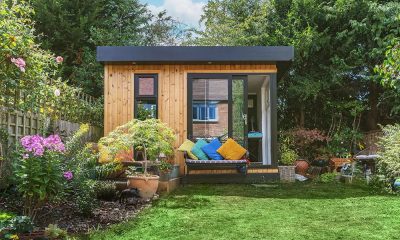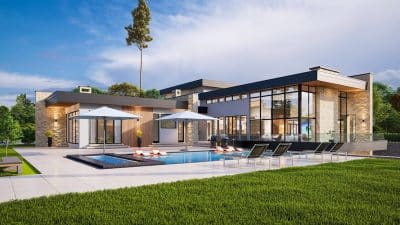
Lighting is far more than just a functional aspect of interior design—it’s a transformative tool that impacts the atmosphere, mood, and functionality of a space. When thoughtfully integrated, lighting enhances both aesthetics and human well-being. Let’s explore how different types of lighting, from natural to artificial, can reshape the experience of a room and why modern lighting technology is more important than ever.
1. The Layers of Lighting: Ambient, Task, and Accent
A well-designed lighting scheme relies on three key elements: ambient, task, and accent lighting.
- Ambient Lighting: Often called the “base” layer, this is the general illumination that fills a room, ensuring it’s bright enough to function in. Overhead fixtures, recessed lights, or large floor lamps typically provide ambient light, creating a sense of safety and comfort. Ambient lighting is essential for establishing the room’s overall brightness and ensuring that the space feels inviting and cohesive.
- Task Lighting: Focused on specific areas where detail work is done, task lighting is essential for activities like reading, cooking, or working. This type of lighting is more focused and brighter, designed to reduce eye strain and increase productivity. For example, task lighting in kitchens or home offices is crucial, as it provides necessary illumination for tasks that require precision and focus. LED lights are a popular choice here due to their brightness, energy efficiency, and long lifespan.
- Accent Lighting: Accent lighting adds drama and highlights specific features, such as artwork, architectural details, or plants. It serves a decorative purpose, drawing attention to elements that might otherwise go unnoticed. Spotlights, track lighting, or wall-mounted fixtures can bring depth and dimension to a room, turning functional spaces into visually compelling environments. Accent lighting is particularly useful in living rooms or dining areas, where creating an ambiance is just as important as functionality.
2. The Role of Natural Light
Natural light is one of the most powerful tools in interior design. Beyond saving energy, it directly influences mood and productivity. Studies show that exposure to natural daylight helps regulate our circadian rhythms, which control sleep-wake cycles, mood, and cognitive functions. Spaces that are well-lit by natural light are often perceived as more spacious and welcoming, and they have been shown to boost both physical and mental well-being.
Strategic use of windows and mirrors can maximize natural light in darker spaces. For example, placing mirrors opposite windows helps to reflect light deeper into the room, enhancing the room’s brightness without the need for additional artificial lighting. Lighter, sheer window treatments allow sunlight to filter through while maintaining privacy, making natural light a key component in enhancing the feel and function of any interior space.
3. Artificial Lighting and Its Impact
Modern advancements in artificial lighting, particularly LEDs, have revolutionized interior design. LEDs offer energy efficiency, long lifespans, and versatile options for adjusting brightness and color temperature. Warm lighting (below 3000K) is typically used in spaces meant for relaxation, such as living rooms and bedrooms, as it creates a cozy, inviting atmosphere. In contrast, cooler lighting (above 5000K) is best suited for workspaces like offices or kitchens, where focus and alertness are paramount.
However, designers must carefully manage blue light exposure from artificial sources, especially at night. Blue light, commonly emitted by screens and some LED fixtures, can interfere with melatonin production, disrupting the body’s natural sleep cycles. This has led to the development of human-centric lighting systems that adjust the intensity and color temperature of light throughout the day, aligning with our natural circadian rhythms. These systems help mimic natural light patterns and create environments that are more in tune with our biological needs.
4. Color Temperature and Mood
Color temperature, measured in Kelvins (K), significantly affects the ambiance and emotional tone of a room. Warmer tones (yellow-red spectrum) are often associated with comfort, relaxation, and coziness, making them ideal for spaces like bedrooms or living rooms. These warmer tones can create a welcoming environment that encourages rest and relaxation.
In contrast, cooler tones (blue-white spectrum) stimulate focus, productivity, and alertness, making them well-suited for work environments such as offices, kitchens, or study areas. Lighting that falls in the cooler spectrum tends to energize the occupants and enhance mental clarity, which is why many offices use cooler-toned lighting to increase productivity.
The ability to control color temperature allows designers to create spaces tailored to specific moods or activities. This balance between warm and cool tones ensures that every room in the house serves its intended purpose while contributing to the overall well-being of its occupants.
5. The Rise of Smart Lighting
Technological advancements, particularly smart lighting systems, have transformed how we interact with light in our homes. Smart lighting allows homeowners to control the brightness, color, and even the hue of light through smartphone apps or voice commands. This flexibility lets users adjust the lighting to suit different times of day or activities, enhancing both convenience and the overall atmosphere of a room.
Smart lighting systems are often integrated with circadian lighting controls, which simulate natural light cycles by adjusting throughout the day. For instance, bright, cool light can be used during the morning to boost alertness, while soft, warm light in the evening encourages relaxation and prepares the body for sleep. This technology not only enhances convenience but also supports well-being by promoting healthier sleep patterns and reducing the impact of artificial light on our natural rhythms.
Conclusion
Lighting is no longer just about illumination; it’s an art form that enhances both the functionality and beauty of interior spaces. By layering ambient, task, and accent lighting, and incorporating both natural and artificial sources, homeowners can create environments that are not only visually appealing but also beneficial to health and productivity. The future of lighting lies in smart, human-centric designs that adapt to our lifestyle needs while promoting sustainability and well-being.
Lighting can elevate any space from ordinary to extraordinary, creating an environment that supports both comfort and functionality. Whether it’s the warm glow of accent lighting or the bright focus of task lighting, each layer works in harmony to produce a cohesive, personalized space that reflects both style and purpose.









